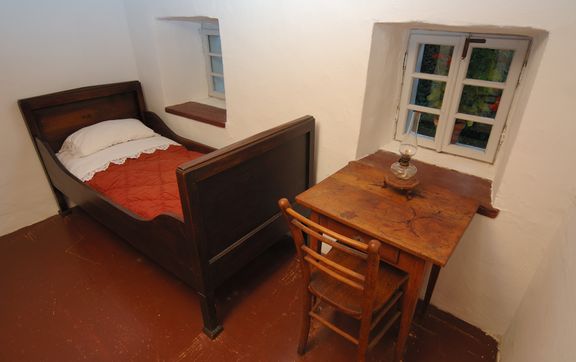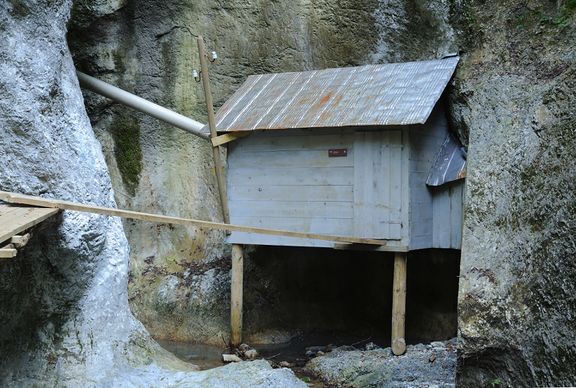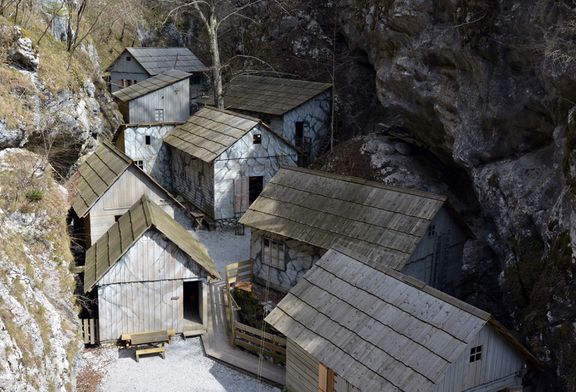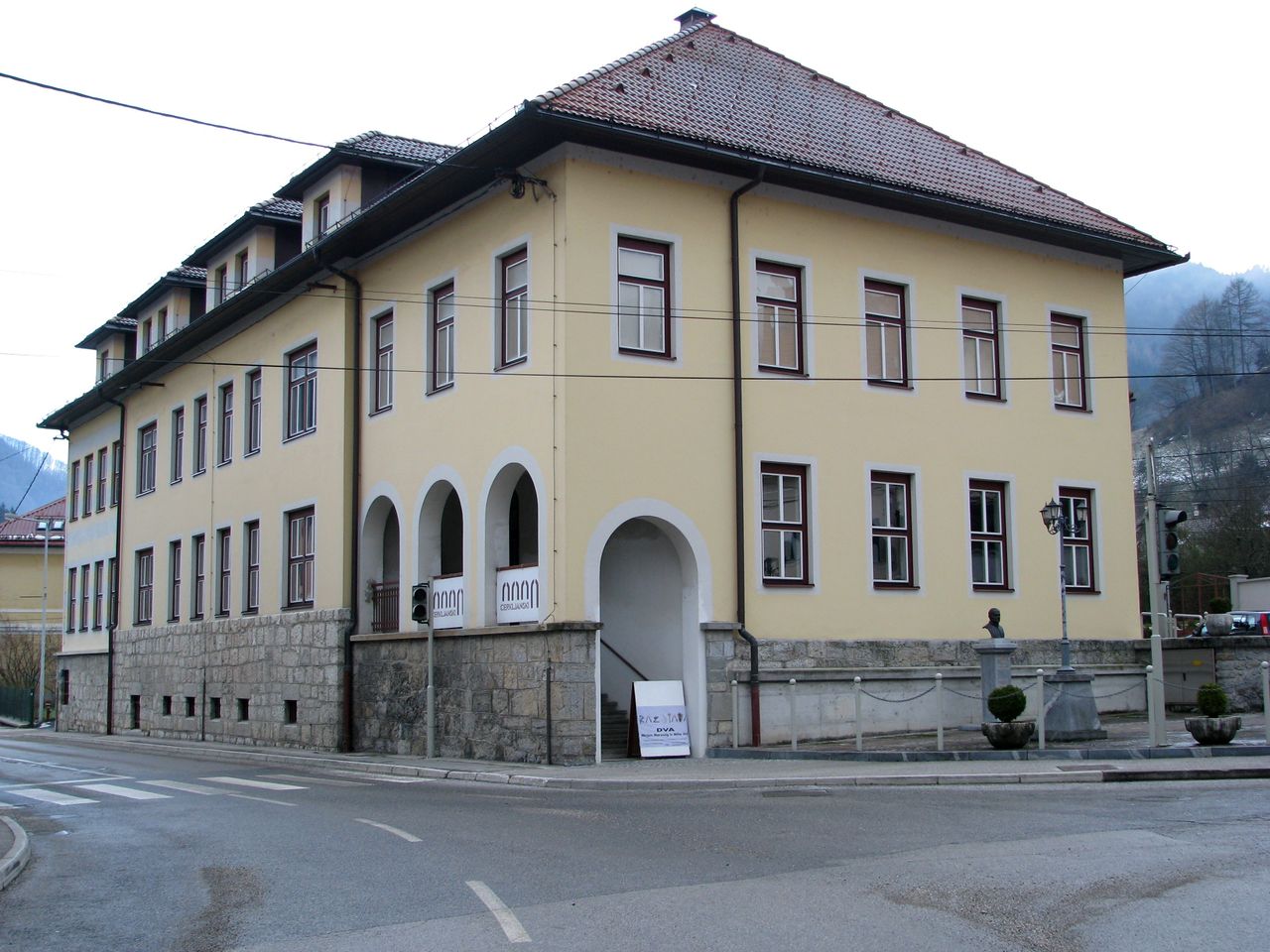 The Cerkno Museum was established by Idrija Municipal Museum in 1978 as a branch museum about the NOB (National Liberation Struggle). The institution studies the rich heritage of the Cerkno region in an integral way
The Cerkno Museum was established by Idrija Municipal Museum in 1978 as a branch museum about the NOB (National Liberation Struggle). The institution studies the rich heritage of the Cerkno region in an integral way
The Cerkno Museum was established by Idrija Municipal Museum in 1978 as a branch museum about the NOB (National Liberation Struggle). Today this institution is the only one that studies the rich heritage of the Cerkno region in an integral way.
In 2006, on the 50th anniversary of the revival of the Cerkljanska Laufarija, a new permanent exhibition entitled Pust is to Blame! - A Story about the Cerkno Laufarija was put on display. The Cerkno laufarji are among the most famous carnival figures in Slovenia, whose wooden masks called larfa are cut from the wood of the linden tree.
Mission
Through its collections, exhibitions, and other activities, the museum enables visitors to recognise and experience the cultural identity of this unique Slovene region. Using photographs, documents, and specimens, they present selected segments of the region's administrative, economic, and cultural life.
Alongside the occasional exhibitions organised by the Cerkno Museum on the basis of its annual work programmes, two permanent exhibitions are on display.
Permanent exhibitions
The collection focuses very much on ethnology. In 2006, on the 50th anniversary of the revival of the Cerkljanska Laufarija, a new permanent exhibition entitled Pust is to Blame! - A Story about the Cerkno Laufarija was opened at Cerkno Museum. The Cerkno laufarji are among the most famous carnival figures in Slovenia, whose wooden masks called larfa are cut from the wood of the linden tree. Their strong resemblance to human faces is unlike any other region in Slovenia. On the basis of collected documentary materials and photographs, the museum has prepared a reconstruction of costumes and requisites for all 25 figures that today form part of the laufarija family. The history of this custom and the ceremony itself are presented in exhibited photographs and other written records.
 PUST IS TO BLAME! – A Story about the Cerkno Laufarija (Laufarija are carnival figures particular to Cerkno), exhibition, Cerkno Museum
PUST IS TO BLAME! – A Story about the Cerkno Laufarija (Laufarija are carnival figures particular to Cerkno), exhibition, Cerkno Museum
The exhibition Cerkno Region Through the Centuries offers (with the exception of archaeological periods) an integral presentation of the historical development of the Cerkno region, a small link in the chain of Slovenia's pre-alpine foothills. Though removed from large centres and events, it nevertheless takes pride in a history which has lasted several thousand years. Although the area had already been settled in prehistoric times, the Cerkno region began to record "real" history in the second half of the 11th century, when certain kings were first mentioned in written sources. The exhibition presents the region's development under various state formations that ruled the area up to the end of the 20th century.
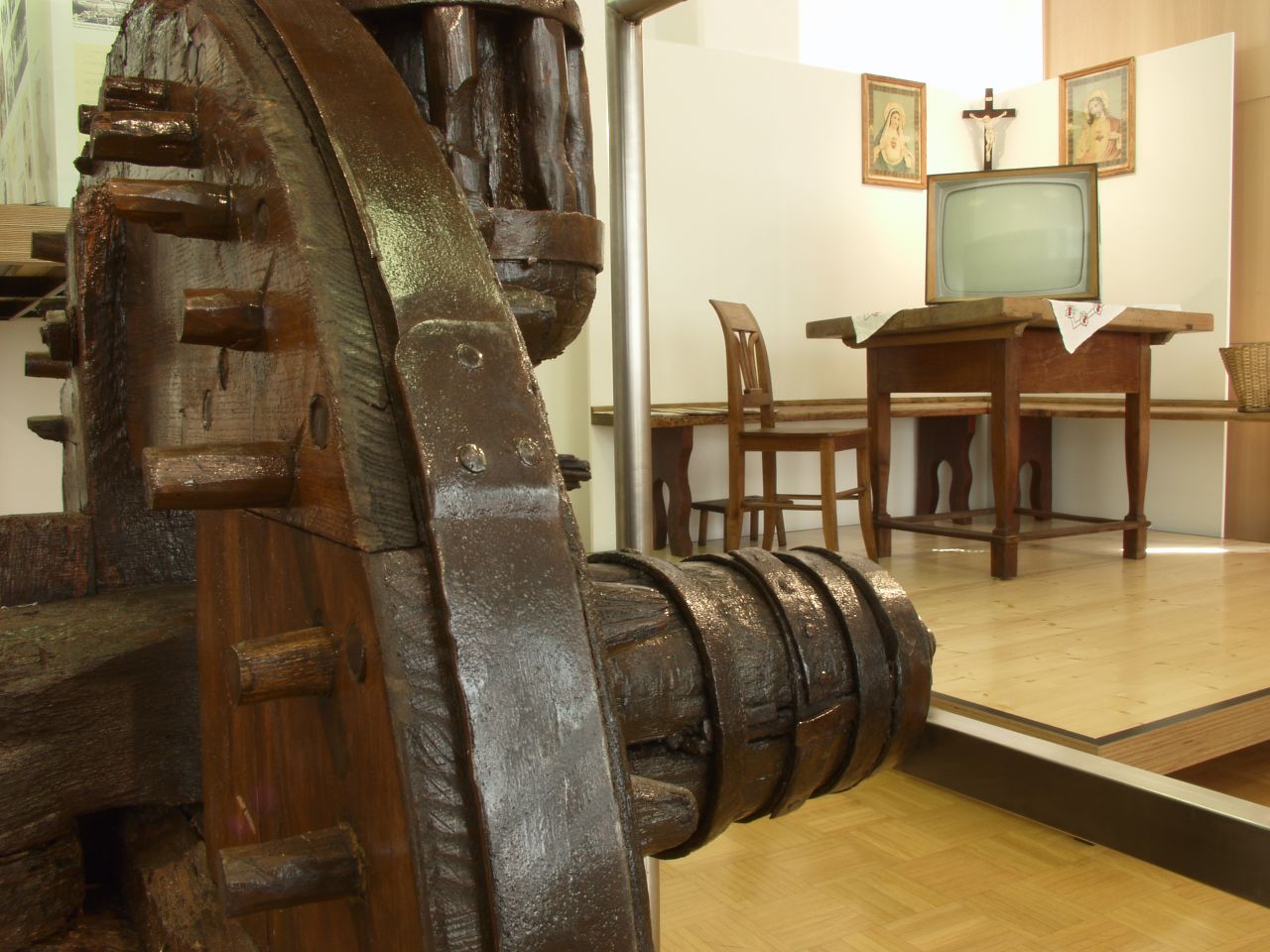 Mill wheel, The Cerkno Region Through the Centuries permanent exhibition at Cerkno Museum presenting the historical development of the Cerkno region, 2004
Mill wheel, The Cerkno Region Through the Centuries permanent exhibition at Cerkno Museum presenting the historical development of the Cerkno region, 2004
France Bevk Homestead, a museum branch
The Cerkno Museum also administers the France Bevk Homestead in Zakojca, which opened in 1990 on the 100th anniversary of France Bevk (1890–1970), a poet and a writer who published more than 100 works, including historical and social novels, collections of poems, and many children's books.
See also
External links
Gallery
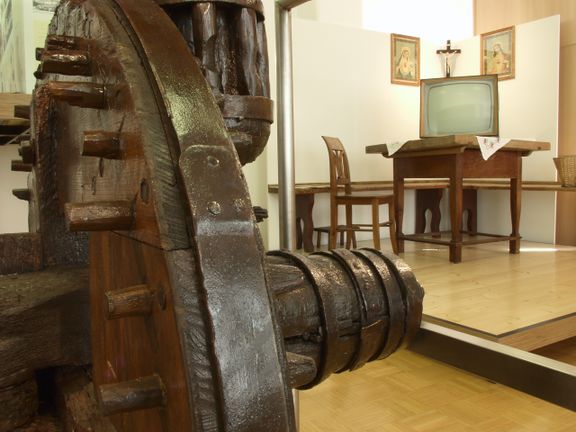
Mill wheel, The Cerkno Region Through the Centuries permanent exhibition at Cerkno Museum presenting the historical development of the Cerkno region, 2004
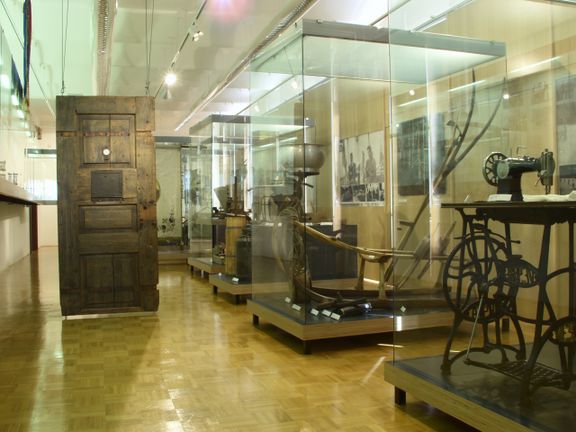
Prison doors, The Cerkno Region Through the Centuries permanent exhibition at Cerkno Museum presenting the historical development of the Cerkno region
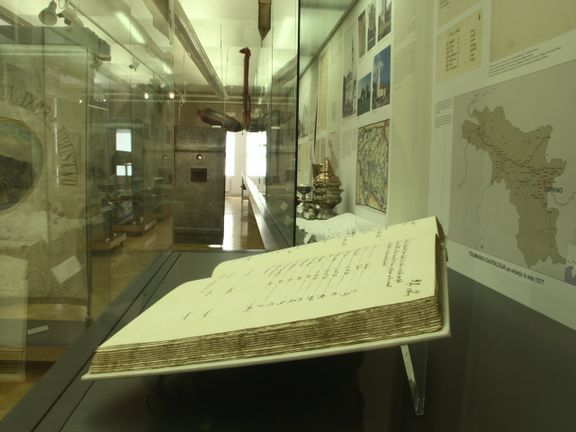
The Cerkno Region Through the Centuries permanent exhibition at Cerkno Museum presenting the historical development of the Cerkno region
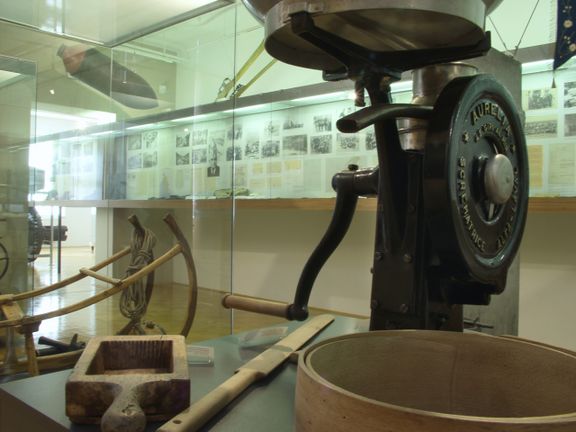
Dairying accessories, The Cerkno Region Through the Centuries permanent exhibition at Cerkno Museum presenting the historical development of the Cerkno region, 2004
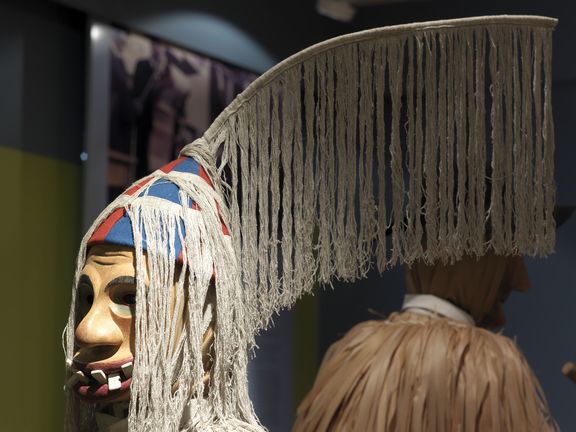
"Ta terjast", PUST IS TO BLAME! – A Story about the Cerkno Laufarija exhibition, (Laufarija are carnival figures particular to Cerkno), exhibition, Cerkno Museum
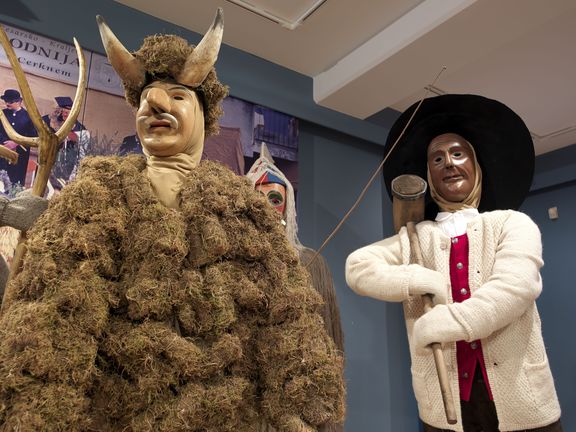
PUST IS TO BLAME! – A Story about the Cerkno Laufarija (Laufarija are carnival figures particular to Cerkno) exhibition, Cerkno Museum
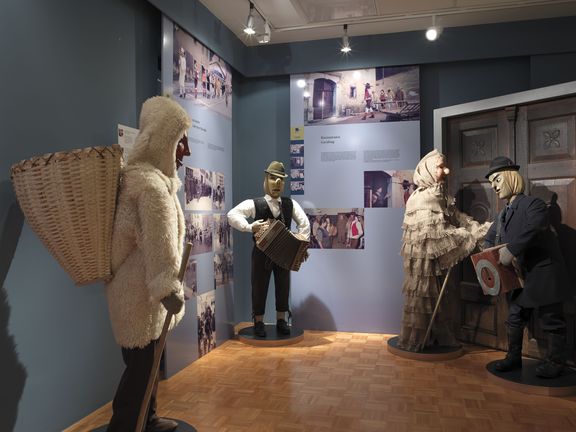
"Laufarji", PUST IS TO BLAME! – A Story about the Cerkno Laufarija (Laufarija are carnival figures particular to Cerkno), exhibition, Cerkno Museum
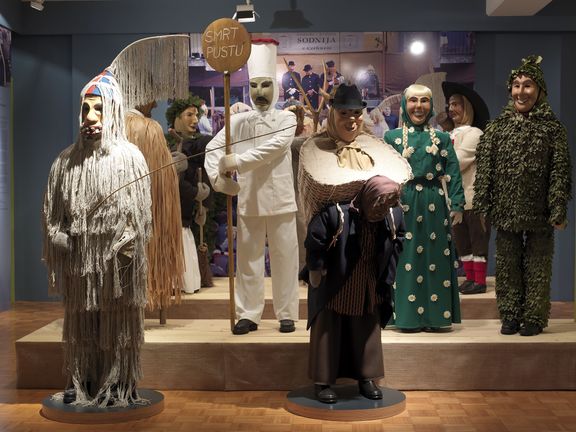
PUST IS TO BLAME! – A Story about the Cerkno Laufarija (Laufarija are carnival figures particular to Cerkno), exhibition, Cerkno Museum
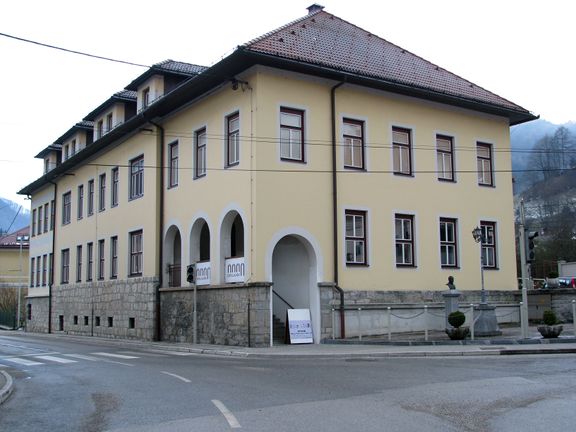
The Cerkno Museum was established by Idrija Municipal Museum in 1978 as a branch museum about the NOB (National Liberation Struggle). The institution studies the rich heritage of the Cerkno region in an integral way
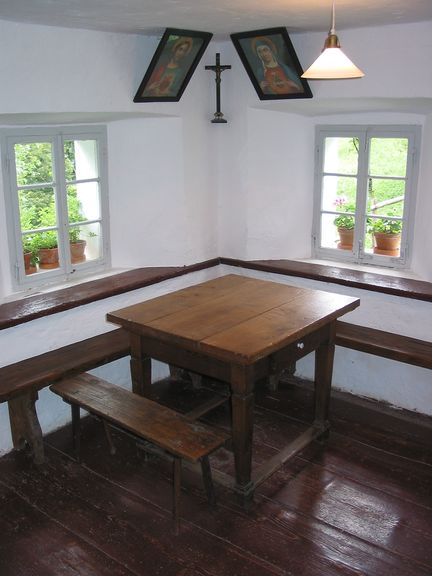
The main living area in France Bevk Homestead, the place where the family gathered for meals and on long winter evenings
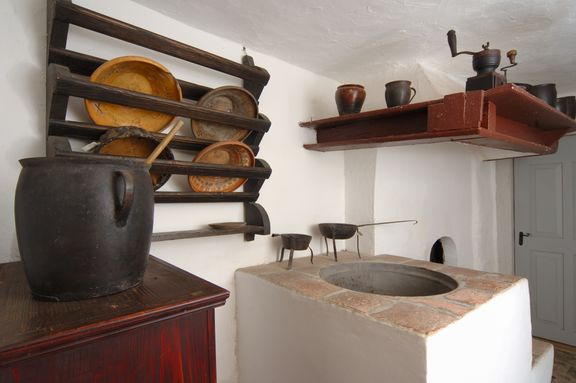
On the ground floor of France Bevk Homestead are a vestibule and a kitchen with a hearth and an inbuilt pig kettle
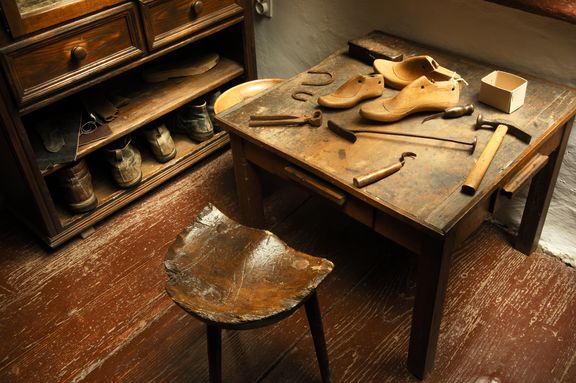
Tools set out in one corner of the main living area reveal that France Bevk's father made and repaired shoes, France Bevk Homestead, 2005

France Bevk Homestead, the attic in which Slovene writer France Bevk (1890–1970) wrote his first book as a 12-year-old boy, transformed into an exhibition room displaying documentation relating to the writer's life and work
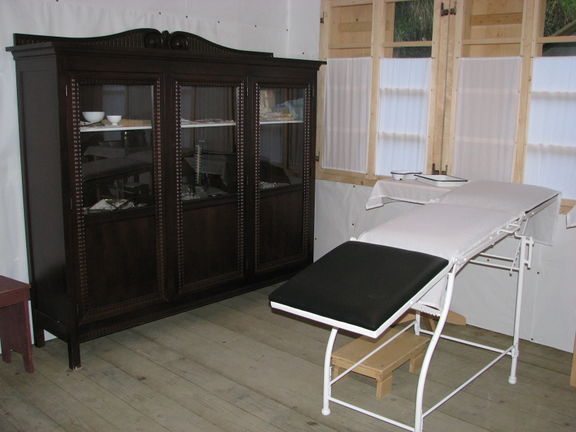
The operating room at the Franja Partisan Hospital. A precise reconstruction of the original interior that was devastated by huge floods in 2007.
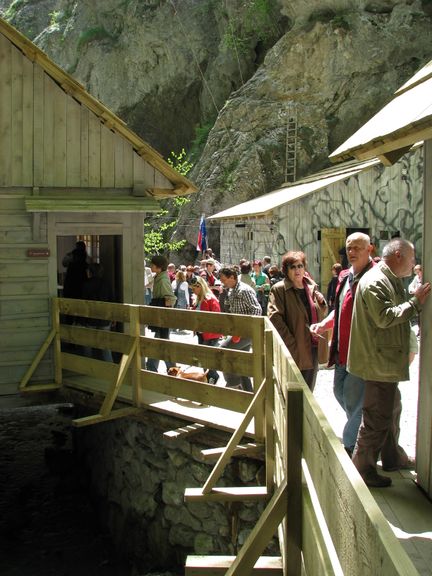
The reopening of the Franja Partisan Hospital in May 2010, reconstructed after a catastrophic flood in 2007 that caused extensive damage and made the steep Pasice Gorge impassable
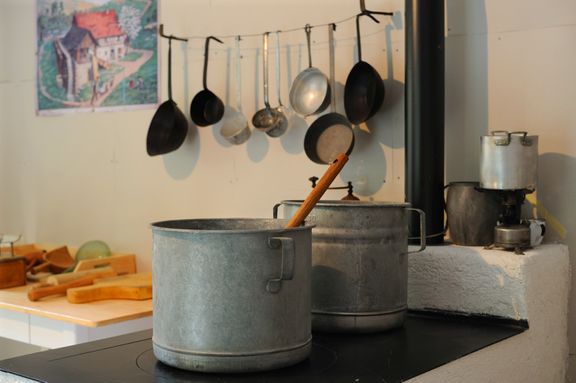
A kitchen interior at the Franja Partisan Hospital. An original 1943 interior had to be reconstructed after floods in 2007.

A room with bunk beds for the wounded in one of the 14 barracs of the Franja Partisan Hospital. A reconstructed site, 2010.
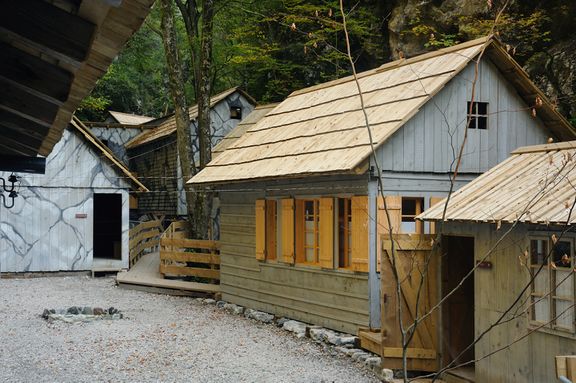
One of the barracs with an X ray & operating room. After reconstruction in 2010.
 PUST IS TO BLAME! – A Story about the Cerkno Laufarija (Laufarija are carnival figures particular to Cerkno), exhibition, Cerkno Museum
PUST IS TO BLAME! – A Story about the Cerkno Laufarija (Laufarija are carnival figures particular to Cerkno), exhibition, Cerkno Museum
 Mill wheel, The Cerkno Region Through the Centuries permanent exhibition at Cerkno Museum presenting the historical development of the Cerkno region, 2004
Mill wheel, The Cerkno Region Through the Centuries permanent exhibition at Cerkno Museum presenting the historical development of the Cerkno region, 2004
 The Cerkno Museum was established by Idrija Municipal Museum in 1978 as a branch museum about the NOB (National Liberation Struggle). +
The Cerkno Museum was established by Idrija Municipal Museum in 1978 as a branch museum about the NOB (National Liberation Struggle). +
















